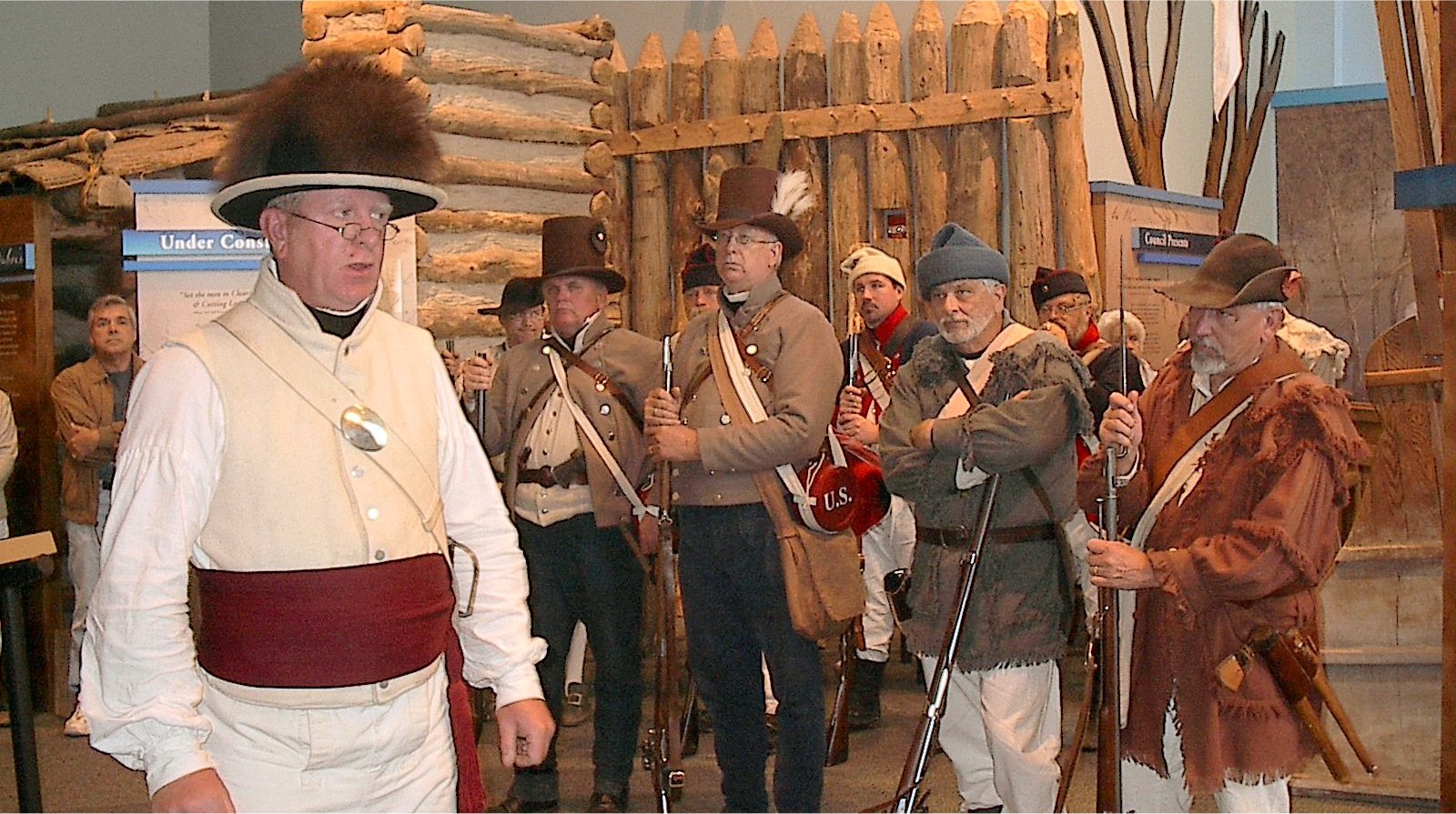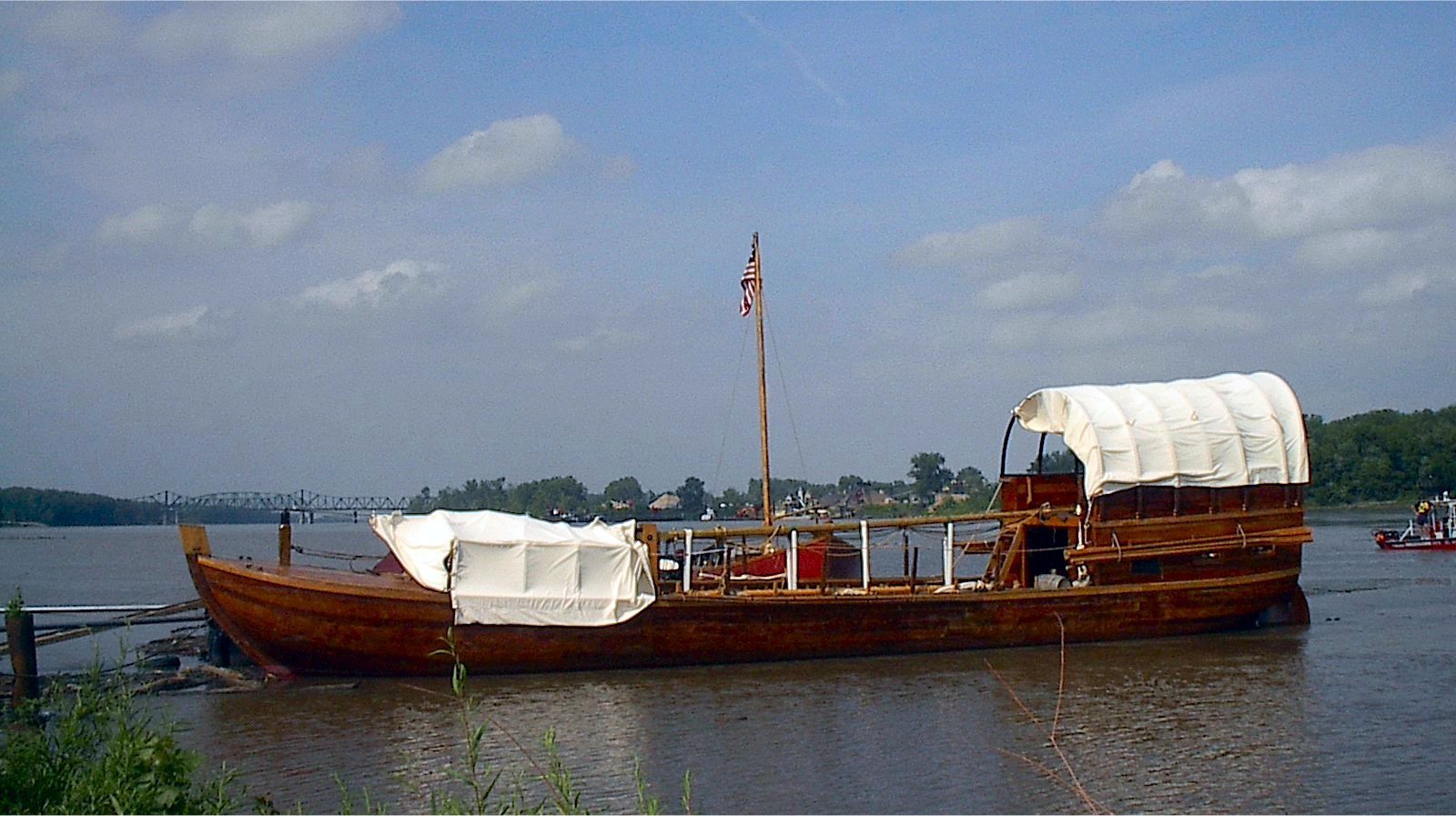Meriwether Lewis arrived on horseback in Cahokia, just south of St. Louis on the Illinois side of the Mississippi River in December of 1803, ahead of William Clark and the rest of the expedition who were traveling on the keelboat up the Mississippi River. Control of the Louisiana Territory at the time was a complicated issue. Although Spain had ceded the territory to France in the treaty of San Ildefonso of 1800, the French never took formal control leaving the Spanish in charge. Lewis’ first priority upon arriving in the St. Louis area was to meet with Spanish authorities. After making contact with the local leaders in the town of Cahokia, just south of St. Louis on the Illinois side of the Mississippi, Lewis crossed the river to St. Louis to meet with Spanish Governor Carlos Dehault Delassus. Lewis was accompanied by prominent Cahokians Nicholas Jarrot and John Hay who acted as interpreters as Lewis spoke no French or Spanish and Delassus spoke no English.
At this meeting Delassus declined to give the Americans permission to travel up the Missouri River and suggested that the party stay in the St. Louis area for the winter. Lewis wasn’t exactly disappointed by this refusal. There were many preparations to be made before traveling up the river and the region provided an excellent base for operations. Lewis informed Delassus that the decision for the site of a the winter encampment had already been made. This site was at "the mouth of a small river called DuBois on the E. side of the Mississippi opposite to the mouth of the Missouri." This site, now known as Camp River Dubois, was on 400 acres owned by Jarrot and provided plenty of timber, wild game for sustenance, seclusion, and quick access to the Missouri River. The exact location of Camp River Dubois is the subject of debate because, over the years, the effects of flood and erosion have shifted the Mississippi's course. The site for the Lewis & Clark State Historic Site was chosen because it sits across from the present day mouth of the Missouri River.
There were many activities that required the Corps of Discovery’s attention during the winter of 1803-1804. Lewis spent most of the winter in St. Louis purchasing supplies, gathering intelligence, and awaiting news that the Purchase had been completed. Clark and the rest of the party made preparations at Camp River Dubois. It was here that Clark drilled the men to prepare them for their historic expedition. Choosing and preparing the right men to form the Corps of Discovery took an entire winter.
On May 14, 1804, Clark and some forty-two men embarked up the Missouri River. Lewis would meet up with the party at St. Charles, Missouri. The expedition left St. Charles on May 21, searching for a rout to the Pacific Ocean, with a keel boat and two smaller craft called pirogues, all propelled, as conditions required, by sails, oars, poles, or tow-ropes.







